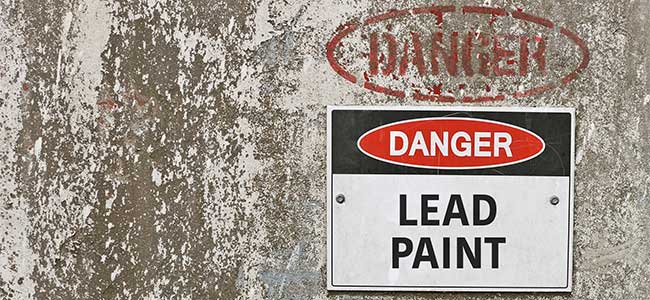
EPA Finalizes Stronger Standards to Mitigate Lead Paint Dust Exposure
The EPA has introduced stricter standards for lead paint dust in homes and childcare facilities to protect children's health, particularly in vulnerable communities.
- By Robert Yaniz, Jr.
- Oct 29, 2024
The U.S. Environmental Protection Agency (EPA) introduced stricter guidelines to combat lead paint dust exposure in homes and childcare facilities built before 1978. Lead exposure causes developmental delays and cognitive impairments in children and heightens adults’ risk of cardiovascular diseases and cancer.
According to a recent release, the new standards aim to reduce lead exposure among vulnerable populations, particularly children. The EPA estimates that these updated requirements will decrease lead exposure for roughly 1.2 million individuals annually, including between 178,000 to 326,000 children under six years old.
“Too often, our children—the most vulnerable residents of already overburdened communities—are the most profoundly impacted by the toxic legacy of lead-based paint,” EPA Administrator Michael S. Regan said in a statement. “EPA is getting the lead out of communities nationwide. These protections will reduce lead exposures for hundreds of thousands of people every year, helping kids grow up healthy and meet their full potential.”
The new standards have established lower thresholds for lead levels in dust, such as reducing the acceptable levels from 10 to 5 micrograms per square foot on floors, from 100 to 40 micrograms per square foot on window sills, and from 400 to 100 micrograms per square foot on window troughs. These revised limits are aligned with standards previously adopted in New York City.
Despite a federal ban on lead-based paint in residential settings since 1978, an estimated 31 million homes still contain lead paint, with about 3.8 million housing children under six. Lead-contaminated dust is a leading cause of elevated blood lead levels in children, especially in low-income and minority communities where deteriorating paint is more prevalent.
In addition to the new dust-lead standards, the EPA recently mandated that drinking water systems nationwide identify and replace lead pipes within ten years, further bolstering efforts to eliminate lead exposure.
About the Author
Robert Yaniz, Jr. is the Content Editor for Environmental Protection.